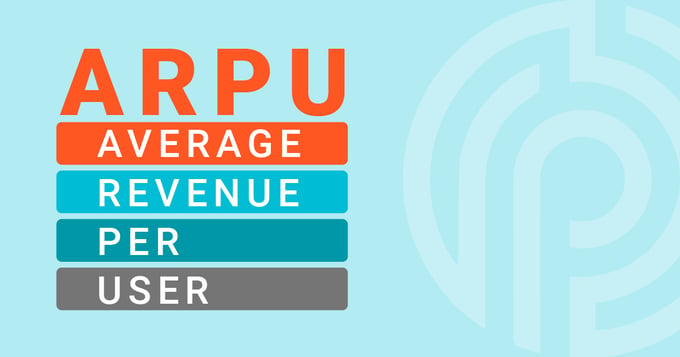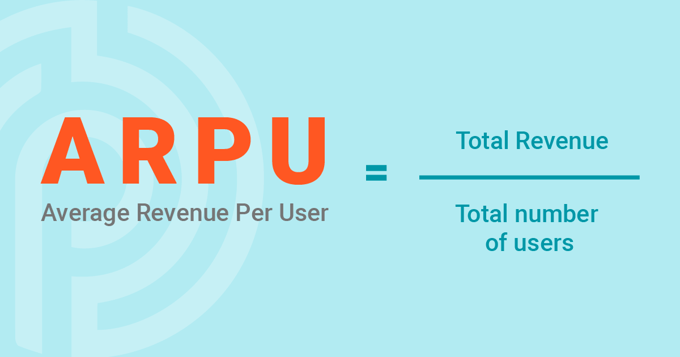Written By:
Kayley Blanchard
If you’re a marketer tasked with setting a website traffic target for your organization, you might be overwhelmed or unsure of where to begin. You’re left wondering how much traffic your business really needs to hit larger business goals.
In this article we look at:
-
How to determine how much website traffic your business needs to achieve larger business objectives
-
The step-by-step process for calculating your website traffic target
As a marketer, many of your daily tasks are completed with one objective in mind: Increasing your website traffic.

Inbound marketing is based on providing value to your target audience through your content, high traffic generally signals high-value content. This content is ultimately responsible for your site showing up in organic search results. This strategy can help you naturally increase traffic and site authority through backlink acquisition. Once you get users to your site, you need to have a way for them to convert from a visitor to a lead. Converting visitors can oftentimes require a well-aligned content offer, form submission, or live chat request. Simply put, the more visitors you get, the more likely these visitors are to convert to qualified leads and ultimately paying customers, thus increasing revenue for your business.
Since website traffic reflects the effectiveness of your marketing plan, you’ll want to have a goal in place for this metric. The problem is, it can be difficult to know where to begin, and what number to use as your target.
Here, we’ll walk you through the process of finding exactly how much website traffic your business needs to hit its revenue targets.
How much website traffic do you actually need?
Although it might seem overwhelming, determining your ideal website traffic target is actually quite simple. You can easily find how much website traffic you need by working backward from your organization’s revenue goals. Coming up with a number is as easy as following these three steps:
- First, take a look at how much revenue your business needs for the period and calculate how many customers it would take to generate this amount of revenue.
- Then, you’ll want to analyze your lead-to-customer conversion rate and determine how many leads it takes to acquire one customer. From there, you can look at your website performance data to see, on average, how many visitors you need to generate a single lead.
- Lastly, you’ll multiply this by the number of leads you need for your revenue goals. This will tell you exactly how many website visitors you need in order to yield a certain amount of revenue.
This might sound difficult, but don’t go anywhere—it’s much easier than it sounds. Below, we walk you step-by-step through the process.
If you need some help with the calculations, check out our free Inbound Marketing ROI Calculator to play around with different traffic levels to see what you need to do to get where you want to be.
How to Calculate Website Traffic Goals
1. Look at your revenue goals.
First, you’re going to need your organization’s revenue goals for the period in question. In this example, we’ll assume that the revenue goals are yearly goals.
If you work for a large organization, you can most likely get these numbers from the sales or finance departments if they don’t already exist within marketing. For small businesses, you’ll probably want to get this information from your CEO.
Download the S.M.A.R.T. Marketing Goals Template
An easy-to-use, free spreadsheet template with step-by-step instructions.

In our example, your company’s revenue goal for the year is going to be an increase of $100,000 from the previous year.
2. Identify the number of customers that you need to hit your revenue goals.
Now, you’ll want to work backward from your revenue goal to determine the number of customers that you need to acquire in order to hit this goal.
To do this, you need to analyze some historical data within your CRM to determine your Average Revenue Per User (ARPU). This metric represents the amount of revenue for a specific period that your company generates per customer.
Let’s say that after crunching some numbers within your CRM, you’ve determined that your past customers generated an average of $5,000 in revenue per year for your company. This means that your ARPU is about $5,000.
You’ll use your ARPU to calculate how many customers you need to acquire to hit your yearly revenue goal. To do this, you simply need to divide your revenue goal by your ARPU.
How To Calculate Number of Customers:
Revenue Goal / ARPU = # of Customers
Your equation should look like this:
$100,000 / $5,000 = 20 customers
We now know that in order to generate $100,000 in additional revenue for the calendar year, your company needs to acquire 20 new customers.
3. Calculate how many leads you need to acquire one customer.
By now, you should know how many additional customers you need to acquire to generate a specific amount of revenue for your company.
Next, we need to break this down further and calculate the number of leads you should have in your sales funnel to meet your customer acquisition goal.
To do this, you’ll need to calculate your average lead-to-customer conversion rate; this number represents the percentage of leads that become customers. Depending on your CRM of choice, your conversion rate may be calculated automatically. If not, simply divide the number of customers your business has acquired for a given period by your total number of leads for the period, and multiply that by 100.
For example, if you had 100 leads in your funnel and 10 of them converted, then your lead-to-customer conversion rate would be 10 percent.
Now, you’ll use your lead to customer conversion rate to determine how many leads you need to generate in order to acquire a single customer.
Previously, we determined that you need 20 new customers to generate an additional $100,000 in revenue for the calendar year. We also know that 10% of the leads in your sales funnel are likely to become customers. This means that you’ll need 200 leads in order to hit your target of 20 customers, or 10 leads to acquire a single customer.
4. Determine how much traffic you need to hit your lead generation target.
At this point, you just need to tie back everything we’ve calculated so far to your website traffic goals. To do this, you’ll start by identifying and analyzing your Website Traffic Lead Ratio. This metric tells you how many of your website visitors convert to leads.
To find your Website Traffic Lead Ratio, you’ll want to look at both your historical sales data and website traffic data and determine how many visitors you need to produce a single lead.
Let’s say that last year you had 100,000 website visitors, and 4,000 of these visitors became leads; in this scenario, your Website Traffic Lead Ratio would be about 4 percent. Digging a bit deeper, you can also conclude that you need about 25 website visitors to generate a single lead.
Website Visitors / Leads = # Visitors Needed For Single Lead

We know that you need to generate 200 leads in order to acquire 20 new customers who will produce an extra $100,000 for your company. We also know that you typically need about 25 website visitors on average to generate a single lead.
To determine how many visitors you need to produce $100,000 for your business, you’ll simply multiply the 25 website visitors by 200 leads. By doing this, you’ll find that you need 5000 additional website visitors over the course of the year (or roughly 416 more visitors each month) to generate 200 additional leads. Out of these 200 leads, about 20 will become customers. These 20 customers will contribute about $5,000 in additional revenue each, putting you at your goal of an additional $100,000 in revenue.
And that’s it—you’ve successfully calculated how much website traffic you need to hit your revenue goals!
Putting This Into Action
Crunching some numbers to determine the appropriate website traffic targets for your business is only the very beginning of your planning process.
After identifying how many website visitors you need, you’ll want to set marketing goals by using our SMART marketing goals template to outline the specific steps that your marketing team is going to take to get you there. To boost website traffic, you’ll likely want to zero in on your content marketing strategy and technical SEO efforts to maximize your visibility in search results. Of course, you’ll also want to consistently measure your progress toward your goals and adjust your strategy as needed.
By setting and tracking specific goals for your website marketing efforts, you’ll be able to make more data-driven decisions and increase your likelihood of success.
Download our free SMART goal setting template to get started!







